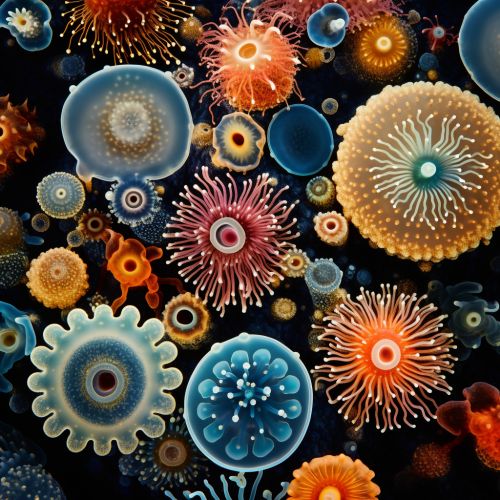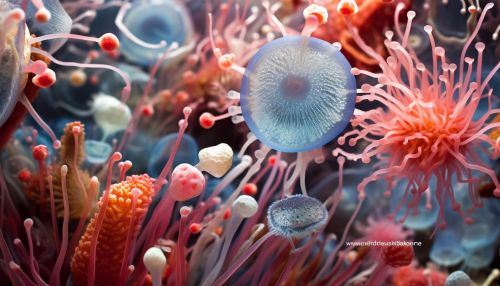Protozoan
Introduction
Protozoa are a diverse group of unicellular eukaryotic organisms, many of which are motile. Originally, protozoa had been defined as unicellular organisms with animal-like behaviors, such as motility and predation. The group includes the infamous parasites Plasmodium, which causes malaria, and Toxoplasma, which causes toxoplasmosis.


Classification
The classification of protozoa has been a subject of debate for many years. They were previously grouped in the kingdom Protista, but this grouping is contested as it is considered polyphyletic. Modern taxonomy places them in various groups spread across multiple supergroups.
Morphology
Protozoa exhibit a wide range of sizes and morphological features. They range from a few micrometers to several millimeters, and some marine species can reach sizes up to a few centimeters. They can exist as free-living organisms or as parasites, and this lifestyle has a significant impact on their morphology.
Life Cycle
Protozoa typically have complex life cycles which include both asexual and sexual reproduction. The life cycle of a protozoan begins with the cell dividing into two. This process, known as binary fission, results in two identical cells. Some protozoa also reproduce sexually, a process which involves the fusion of two cells and the creation of offspring with genetic material from both parents.
Ecology
Protozoa play a crucial role in the ecological food web. They are often the predators of bacteria, fungi, and algae, and serve as food for small animals such as insects. Some protozoa also have symbiotic relationships with other organisms, including plants and animals.
Pathogenic Protozoa
Some protozoa are pathogenic and can cause diseases in humans and other animals. These include the aforementioned Plasmodium and Toxoplasma, as well as others like Giardia, which causes giardiasis, and Trypanosoma, which causes sleeping sickness.
